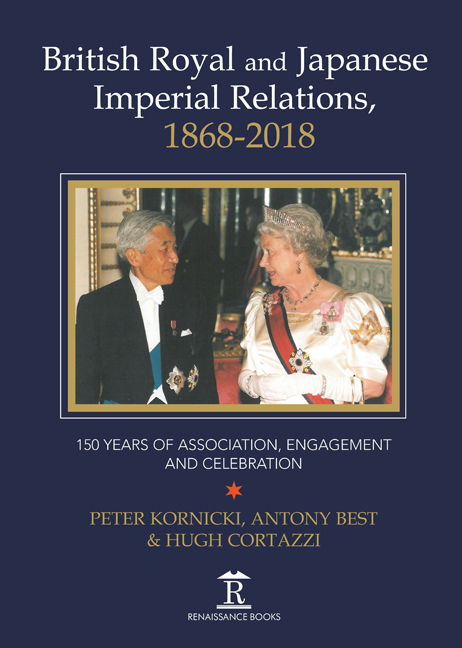 British Royal and Japanese Imperial Relations, 1868-2018
British Royal and Japanese Imperial Relations, 1868-2018 Renewing and Developing Royal Relations in a Changed World: 1945—2018
Published online by Cambridge University Press: 30 April 2022
Summary
FOLLOWING THE OUTBREAK of hostilities in December 1941, the Japanese invasion of Malaya was followed by the sinking of the two Bntish capital ships, HMS Prince of Wales and HMS Repulse, and then by the surrender of Hong Kong on Chnstmas Day. As the war in the Far East unfolded, British resentment against Japan intensified. The humiliation of the Bntish surrender of Singapore in February 1942 could not easily be forgotten, but as confirmation was received of Japanese maltreatment of pnsoners of war and civilian internees, feelings against the Japanese emperor in whose name Japanese soldiers were fighting became angry and there were calls for him to be tned and punished once victory had been attained. No one in Bntain gave any real thought in 1945 to reviving the relationship between the Bntish royal and the Japanese impenal families and courts. The pnonty was survival and recovery. There could be no going back to the pre-war world. The balance of power had radically changed as a result ot the war. Monarchical systems were being superseded, and if monarchies were to survive in the post-war world they would have to change and adapt.
THE BRITISH MONARCHY
The Bntish monarchy had come out of the war with its populanty and prestige enhanced by the identification of King George VI and his queen with the war effort and the suffenngs of Bntish people in the blitz and in battles which had only been won through suffenng and sacnfice. But the old hierarchies and stuffy court system of the past could not be revived in their old form in an age of austerity and under the Labour government that came to power in August 1945. The Bntish loved pageantry, but there was no money left for ostentatious show. Changes were inevitable, but they took time to work their way through the system. Many changes did not come about until the accession of Queen Elizabeth II in 1952 on the death of King George VI. Pnnce Philip, the Duke of Edinburgh, in particular recognized that if the monarchy did not adapt to the post-war world its existence would be questioned. Royalty could not continue a gilded life cocooned from the realities facing working people. It had to show a human face.
- Type
- Chapter
- Information
- British Royal and Japanese Imperial Relations, 1868-2018150 Years of Association, Engagement and Celebration, pp. 143 - 220Publisher: Amsterdam University PressPrint publication year: 2019


